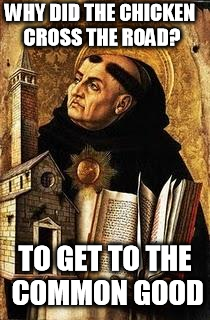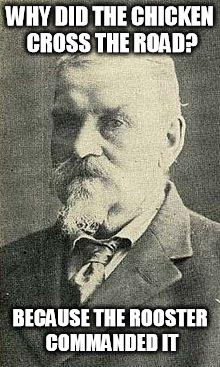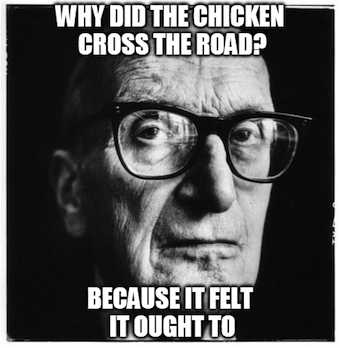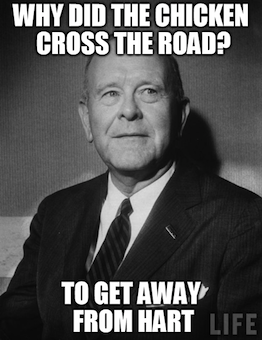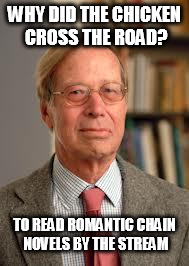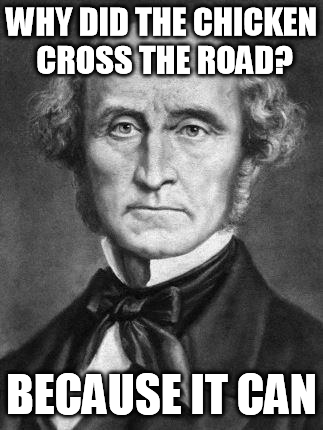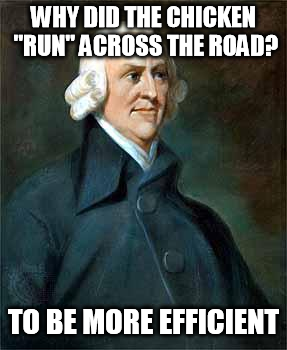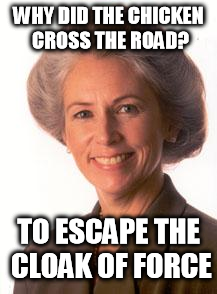TRU/Law3020/GroupH
Contents
[hide]Rodriguez v British Columbia (Attorney General), [1993] SCR
This is a landmark Supreme Court of Canada case concerning assisted suicide. Sue Rodriguez is a 42 year old woman and mother. She is terminally ill with ALS, and has a life expectancy of 2-14 months. Ms. Rodriguez would like a doctor to perform assisted suicide when she feels she is no longer able to enjoy life. Assisted suicide is prohibited by the Canadian Criminal Code under section 241(b). The section states:
241. Every one who (a) counsels a person to commit suicide, or (b) aids or abets a person to commit suicide, whether suicide ensues or not, is guilty of an indictable offence and liable to imprisonment for a term not exceeding fourteen years.
Ms. Rodriguez challenges s.241(b), arguing that it is contrary to the Canadian Charter of Rights and Freedoms. She claims it violates her section 7, 12 and 15(1) Charter rights. Section 7 concerns the right to "life, liberty, security of the person, and not to be deprived thereof except in accordance with the principles of fundamental justice". Section 12 gives the right to be "free from cruel and unusual punishment". Secion 15(1) guarantees that "everyone is equal under the law".
In a 5-4 decision, the Supreme Court of Canada upheld the Criminal Code provision. The majority decision was written by Justice Sophinka, with Justices LaForest, Gonthier, Iacobucci, and Major concurring. The minority dissent was written by Justice McLachlin, as she was then, with Justice L'Heureux-Dubé concurring. Chief Justice Lamer, as he was then, and Justice Cory gave their own separate dissenting judgements. Ms. Rodriguez's appeal was dismissed as s.241(b) does not violate section 7, 12, or 15(1) of the Charter. It was also found that s.241(b) fulfils the government's objective of protecting the vulnerable. The provision is also grounded in the State's interest in protecting life and reflects the policy that human life should not be depreciated by allowing life to be taken. This is a fundamental conception of the sanctity of life.
We will be exploring the intricacies of this case through various legal perspectives.
Natural Law
Aquinas' Conception of Natural Law
Natural law tradition is viewed as a source of law beyond human creation. Different conceptions of Natural Law will view divine command, human nature, and the order of nature as sources. Natural Law is viewed as unchanging and universal since the sources that inform it are considered unchanging and universal. A Naturalist would purport that an unjust law is no law at all, thus moral conflict will not exist. The teleological purpose of the law is working towards the common good of society. All humans have access to natural law through their ability to reason as rational beings. For Naturalists such as Thomas Aquinas, a valid law must have the following four elements:
- 1. Must be directed to the common good;
- 2. Must follow practical reason;
- 3. Must be made by valid lawmaker, and;
- 4. Must be promulgated
Using Natural Law theory, the majority would regard the Criminal Code provision in question a valid law. The majority characterizes the common good as the respect for the sanctity of life. Section 7 is not infringed as life, liberty and security of the person need to be protected. The majority would also say that striking down the provision would violate the principles of fundamental justice. The prohibition of suicide reflects the fundamental values of society. From this perspective, it can be said that the protection of the sanctity of life-- even from oneself, is sourced from beyond human creation. Whether protection of life is God given, intrinsically part of human nature, or as an order of nature, its need for protection is required. A Naturalist also would likely see that the majority has followed practical reason to come to their conclusion. There are certain steps that must be taken to work towards toward the common good. These steps must be practically and reasonably connected to the objective that the law is trying to fulfill. In this case, protecting the sanctity of human life is the purported objective, and the majority would suggest that this objective is rationally connected to the common good. It is interesting to note that a violation for section 15 was found but was saved by section 1 of the Charter. Section 1 "guarantees the rights and freedoms set out in it subject only to such reasonable limits prescribed by law as can be demonstrably justified in a free and democratic society". This reiterates that the sanctity of life is of utmost importance to the common good. Natural Law requires there be a valid law maker. Parliament is undoubtedly a valid lawmaker in our society. Lastly, the Criminal Code is promulgated. Thomas Aquinas would likely agree with this evaluation as it has focused on the common good of a whole group (namely, society) and is taking the objective view of the law. According to Aquinas this is the correct way to apply the law.
The dissent's reasoning through a naturalist perspective would characterize the law as an an unjust law and according to Aquinas, the law would therefore be invalid. For a law to be valid its teleological purpose should be for the common good. While the majority argues that the law is consistent with the common good in respecting death as an extension of the sanctity of life, the dissent would disagree. The dissent would say that the provision is inconsistent with the common good as the most important principle in society is autonomy. To disallow able minded individuals to make autonomous decisions is contrary to the common good. The dissent discusses that individuals are permitted to refuse treatment in favour of death and are permitted to have do not resuscitate orders. The dissent says these choices are analogous to allowing a disabled person to have another aid them in ending their life with dignity. The dissent argues that the only aspect that separates the individuals who are permitted to make their own choice is a physical disability. The level of mental capacity to make autonomous decisions in both groups is identical. To allow the disabled to have the same liberty of choice would not harm the common good.
Naturalists believe that law is necessary to have a stable society. The dissent discusses how adequate measures can be taken in the form of criteria and guidelines that would need to be fulfilled in order to counteract any instability within an assisted suicide program. Within the dissent, Lamer argues that forbidding assisted suicide is not rationally connected to the section 1 reasonable limitation clause. He says it is not a justifiable limit as it does not minimally impair and the alternatives are not harmful to the common good. This idea is similar to Aquinas’s idea that law has to be rationally connected to its purpose in order to be within the scope of a just and valid law. Also, McLachlin and L'Heureux-Dubé's reasoning turns on the the fact that they see the the majority's characterization of fundamental justice as arbitrary. Aquinas might concede to this argument because as per the majority's arbitrary characterization, fundamental justice is not rationally connected to the objective that the law is trying to fulfill.
Positivism
John Austin may begin by agreeing with Aquinas that people have a moral obligation to obey the law. However, he would point out that a person chooses to obey s.241(b) of the Criminal Code not because it is morally right but because the law is valid. As the present case deals with the interplay between morality and the law, Austin will emphasize the importance of viewing the two as separate entities. The connection between law and morality in this case arise as a result of Parliaments attempt to create laws that are congruent with morality. Austin will argue that issues surrounding the morality of assisted suicide have no impact on the validity of the law. Instead, the validity of s. 241(b) is to be assessed by evaluating how the law was enacted and whether it satisfies the pedigree test. For Austin, Aquinas’ views on the connection between morality and the law fail to describe the dilemma that average citizens face when confronted by what they feel is an immoral or unjust law. Ms. Rodriguez faces such a dilemma in this case. Aquinas would hold that s.241(b) of the Code imposes no moral obligation on Ms. Rodriguez since it is an unjust law, which renders the law invalid. Aquinas would not see a moral dilemma in the present case. Austin would object. He would argue that Ms. Rodriguez has a legal obligation to obey the law, and a general moral obligation to do what she believes is morally right. Hence, she must choose between violating either the moral or legal obligation, which creates a moral dilemma.
Austin sees law as a human artifact, one which must be empirically provable and created pursuant to the rule of law-making jurisdiction regarding the creation of law. Addressing Aquinas, Austin will explain that a valid law need not be directed toward a common good. Rather, it must be issued by superiors to subordinates and backed by sanctions. S.241(b) of the Code was enacted by Parliament, which Austin would regard as a sovereign entity. Since it was enacted by Parliament, we can assume that s.241(b) was created pursuant to rule of the law-making jurisdiction. Furthermore, the provision contains both a command and sanction; namely, that it prohibits the assistance of suicide, which if contravened results in the commission of an indictable offence. Therefore, Austin would consider s.241(b) a valid law since it satisfies the elements of the pedigree test.
Austin would agree with the outcome of the present case as s. 241(b) was found to be constitutional. However, he would likely be critical of both the majority and the dissent. A considerable portion of the judgment focuses on “fundamental principles” and Charter values. Austin would be critical of the majority’s statement that when “dealing with this contentious, complex and morally laiden issue, Parliament must be accorded some flexibility”. For Austin, this flexibility is unwarranted since moral principles should not influence judicial decision making. Austin may be hesitant to accept the Canadian Charter of Rights and Freedoms as valid law. The Charter regulates and monitors the behaviour of Parliament and legislatures. This contradicts the requirement that a valid law must be issued by superiors to subordinates. Likewise, the Charter contains neither commands nor sanctions. Nevertheless, Austin may face a dilemma in deciding how the Charter as well as the Canadian Constitution should apply. While the Charter does not form part of the law-making process, legislatures are aware that a law will likely be struck down by the judiciary if it results in significant infringement of a Charter protected right or freedom. Austin would be critical of this exercise of judicial discretion, as he believes that the sovereign delegates certain powers to the judiciary, which in turn is responsible for making specific commands, as opposed to generalized rules. From the dissenting opinion, Austin would likely be most agreeable with Lamer's suggestion that s. 241 (b) be sent back to Parliament for modification or replacement. Austin, and other legal positivists, maintain that it is the role of the legislature to amend a law if it is seen as a significant affront to societal values. In the absence of such intervention, the law is to be obeyed.
The Separation Thesis
The Separation Thesis maintains that there is a conceptual separation between law and morality-- that there is a difference between what law is and what law ought to be. The Rodriguez case can be understood to incorporate Separation Thesis theory. The Separation Thesis focuses on two positions: a legal obligation to do something need not entail a moral obligation to do so, and a moral obligation need not entail a legal obligation.
Despite the fact that law and morality do often overlap, they are regarded as two separate spheres. This is a direct contrast to Natural Law theory. Natural law theory is distinct in that law’s function must be objectively morally good. Both Austin and HLA Hart would reject the core claim of Natural Law theory that “an unjust law is not really a law at all.” If the Separation Thesis pertains only to the conditions of legal validity, then it is readily applicable to Rodriguez. The decision in the case, both the majority and the dissent, concludes that the conditions of legal validity do not depend on the moral content of the norms in question. Rather, the focus is application of what the law is in the relevant circumstances. It is important to note however, that despite being separate spheres, legal rules may be evaluated with reference to moral rules. The Separation thesis defines basic terms and concepts and explains their interconnectedness to distinguish law and morality from one another. This is the case for the section 7 analysis by the majority in the Rodriguez case.
The Separation Thesis and the Majority
The phrase in section 7 "principles of fundamental justice", implies that there is some consensus that these principles are vital or fundamental to our societal notion of justice. This societal notion isn't just rooted in the what the law ought to be; it must have some quality or characteristic beyond these rather meaningless "ought claims". This special characteristic is that the societal notion is backed by a legal system and rooted in the rule of recognition. Further, the rules are obeyed-- they are enshrined in the Charter and in the Criminal Code. These principles must then be applied with precision and yield results that are both reasonable and understandable. This makes them stable and effective. The law governing "principles of fundamental justice" can be said to be HLA Hart's "rule of recognition" or "rule-governed practice". The majority is asserting the Charter as rule-governed practice.
The majority holds that fundamental justice requires that a fair balance be struck between the interests of the state and those of the individual. This balance is integral in yielding reasonable and understandable results. The majority states that '"security of the person" encompasses notions of personal autonomy-- an individual has a right to make choices concerning one's own body, control over one's physical and psychological integrity, free from state interference, and basic human dignity. However, the sanctity of life is also a value embodied and protected under "security of the person". Indeed, section 7 interests cannot be divorced from the sanctity of life; the right to life and liberty must be considered in light of Rodriguez's security of the person.
The majority found that there was no violation of section 7, and that their characterization of fundamental justice was not arbitrary. The majority found that it had a sufficient connection with the prohibition in s.241(b). However, any resulting deprivation was found not to be contrary to the principles of fundamental justice. They came to this conclusion by examining the legislative and common law history of the prohibition of suicide. They conclude that it reflects part of the fundamental values of society. As a result, it could not be in violation of fundamental justice. This can be likened to Hart's "settled core of meaning".
One might argue that Rodriguez's unfortunate diagnosis, coupled with a prohibition on assisted suicide, is cruel and unusual treatment or punishment. A Separation Theorist would say that this argument is grounded in morality: human suffering is morally wrong. The Theorist would support the majority's rejection of a section 12 violation. This reasoning also exemplifies John Austin's claim that "the existence of law is one thing; its merit or demerit is another”. In other words, protection against cruel and unusual treatment or punishment is afforded to all Canadians. However, the term "punishment" or "treatment" has a strict application in law. In this partcular case, the prohibition of s.241(b) did not fit into this application. Although it may seem 'wrong' or 'uncomfortable' to limit the scope of the protection and deny Rodriguez of it, its merit or demerit is irrelevant. Put simply, there is no overlap of morality and law.
The distinction between law and morality enables the understanding of law as means of social control. The majority states that if legalized, they are fearful that the abuse of assisted suicide will result in the killing of persons not truly and willingly consenting to death. Also, that will be used for murder in cases where consent to death may not in fact be given voluntarily. This is, coupled with the sanctity of life as a principle of fundamental justice, is a means of social control. Moreover, the majority considered the section 15 equality challenge. They note that assuming the prohibition did violate section 15, it was clearly saved under section 1. This is a strict application of what the law is as they found that the objective was pressing and substantial, rational, and that there was no lesser means to achieve the goal.
There are cases, of course, that fall outside of the "settled core of meaning" and into Hart's idea of a penumbra. He refers to these as "hard cases". In such cases, it falls to the judges to decide whether the particular case falls within “settled core of meaning” or not. The judge does this by looking to the "rule governed practice". Through this process, judges find the law rather than make the law. This eliminates the element of inconsistency as a result of individual discretion and personal morality. Indeed, judges draw on and apply rule-governed practises when exercising discretion in the penumbra. As mentioned, the rule-governed practice are the principles of fundamental justice as embodied in the Charter. However, there is no exact definition of "fundamental justice" or its principles. It could be argued that the Charter simply sweeps up society's rule-governed practises in this ambiguous term. As one can imagine, this can create problems of discord. This is why there is a compelling dissent by Justice McLachlin, as she was then, and Justice L'Heureux-Dubé.
The Separation Thesis and the Dissent
McLachlin and L'Heureux-Dubé purport that the Criminal Code s. 241(b) violates the section 7 right to security of the person and that this violation is not saved under section 1. They assert that the protected right has an element of personal autonomy, which protects the dignity and privacy of individuals with respect to decisions concerning their own body. Further, a legislative scheme which limits the right of a person to deal with their body as they choose may violate the principles of fundamental justice, if the limit is arbitrary. A particular limit will be arbitrary if it bears no relation to, or is inconsistent with, the objective that lies behind the legislation. The principles of fundamental justice require that each person, considered individually, be treated fairly by the law. As one can see, their interpretation of section 7 is markedly different from that of the majority. The rule-governed practice they are applying to interpret the section conceptualizes fundamental justice as individuals being treated fairly by the law. Also, their focus on arbitrariness in relation to the objective behind the legislation is a commentary on the parametres of rule-governed practice.
Hart would likely be sympathetic of the dissent by Lamer. Lamer holds that inherent within section 15(1) of the Charter are principles of self-determination and individual autonomy. He considers these principles to be "of fundamental importance in our legal system". A limitation on these fundamental elements of justice infringes a person's right to equality pursuant to section 15(1) of the Charter. HLA Hart would maintain that while Lamer's reasoning was not accepted by the majority, his application of the law was not necessarily invalid. Hart explains that judges draw on the terms of the rule-governed practice to decide the hard cases in the penumbra; those things which are true or important about the legal system as a whole. These things are not “essential characteristics” that every rule has to have and they may change as circumstances change. Perhaps the majority and the dissent simply see different circumstances in this hard case.
Legal Realists would likely say that what Hart claims judges do is unrealistic. They would be sceptical of the idea of law as a scientific or mechanical set of rules derived from pure rationality, and interpreted or applied by neutral channellers. However, Hart would say that their decisions are inherently shaped by what they think is necessary or just; they are exercising significant discretion in their decisions. Legal Realists would say that judges need to decide penumbral cases in accordance with needs of society or with reference to social aims; that the law is a tool in the hands of judges to achieve the particular objectives. A Legal Realist would likely support McLachlin and L'Heureux-Dubé's focus on the relationship between the objective of the law the prohibition of individual freedoms. Both Hart and the Legal Realist would agree that these rules need to change when circumstances change.
A Natural Law theorist, such as Thomas Aquinas, would concentrate on universality. The Legal Realist would likely say that universality is an illusion and is practically impossible to achieve. With regard to the penumbra of what exactly constitutes "principles of fundamental justice", Aquinas would argue that judges apply moral rules to fill in the “gaps”. This is where the lines between law and morality become blurred and unseparated. Surprisingly, Aquinas would likely agree with the majority judgement-- perhaps not in reasoning, but in outcome. Aquinas, an essentialist, believes recognized "goods" are essential to all humans. This includes self-preservation. Aquinas would definitely regard the sanctity of life to be of upmost importance. Also, Aquinas's conception of the common good supersedes the good of a specific individual. As a result, he would likely disagree with McLachlin and L'Heureux-Dubé.
The Morality of Law
Lon Fuller is critical of the Separation Thesis. He believes that Hart, and Legal Positivists in general, are wrong in holding that the law and morality should be regarded as two separate entities. In contrast to Aquinas, Fuller believes that morality should not be evaluated through a teleological lens. He also jettisons Aquinas’ idea of a “higher law”. Fuller would argue that Hart’s rule of recognition fails to explain why people feel obligated to follow the law. Likewise, he would argue that Positivists fail to adequately explain why people choose not to obey a law. Rodriguez would likely feel that s. 241(b) is profoundly immoral and thus not a law that she “ought” to follow. Fuller would contend that this realization fails to provide Rodriguez with any guidance. Furthermore, Hart’s rule of recognition would suggest that s. 241(b) ought to be followed since it is found in the Criminal Code. This indicates that officials within the system feel that the provision ought to be enforced.
Fuller would argue that a core settled meaning and the penumbra do not exist. Instead, a law can produce fair and consistent outcomes if it is interpreted in context while having regard to both external and internal morality. Fuller would argue that social acceptance of legal rules is grounded in external morality. This underlying social morality is what compels people to obey the law. Fuller would hold that the requirement of external morality would be satisfied if s. 241(b) serves a morally good end. Fuller would likely appreciate the majority’s reasoning. The majority emphasizes the importance of drawing on the principles of fundamental justice to make decisions. They hold that in order to “discern the principles of fundamental justice governing a particular case, it is helpful to review the common law and the legislative history of the offence in question and, in particular, the rationale behind the practice itself (here, the continued criminalization of assisted suicide) and the principles which underlie it. It is also appropriate to consider the state interest”. Fuller champions such purposive approaches and believes that judges have an obligation to “interpret a legal rule and precedent as a whole, using a set of beliefs about what the given rule or precedent was designed to do, what purpose it was designed to serve, and what good it was meant to accomplish”. By carrying out a purposive approach, the judges in the present case are fulfilling their duty of fidelity to the law. After balancing the various interests in the present case, the majority decides that s. 241(b) protects individual rights and freedoms and furthers the legislative objective of protecting the ill and vulnerable.
Fuller would also argue that assessing the validity of s. 241(b) based on an official’s psychological buy-in is overly subjective and can lead to anarchy. He may also point out that Positivists use morality as a rhetorical fallacy and fail to explain what they view morality as. In explaining his reservations about morality, Hart would contend that morality is a vague and ambiguous concept. Hart believes that upholding s. 241 (b) based purely on morality would lead to uncertainty and not provide any guidance for future cases. Fuller would explain that Hart's fear of bad external moralities ignores the law's inner morality. In contrast to Aquinas, Fuller believes that morality can be found not only in independent moral sources, but also within the “purposeful activity of lawmaking itself”. Fuller believes that a functioning legal system requires that laws be coherent, rational, consistent, known and capable of explanation. Fuller would likely contend that the Charter can be seen as a device by which these principles of inner morality are enforced. A law that is subject to Charter scrutiny must conform to these principles if it is to be upheld. In this case, both the majority and dissenting opinions refer to the reasonable justification test under s. 1 of the Charter. The majority suggests that if s. 241(b) is infringed, Rodriguez’s section 15 Charter right would be justified under s. 1. Furthermore, the majority suggests that s. 241(b) is not overbroad. Fuller would see these factors as principles of inner morality, which when adhered to generate morality and produce valid laws.
Law as a System of Rights
Dworkin on Rules, Principles and Policy
Dworkin argues that the law does not simply contain legal rules. A particular law encompasses principles and policies. In hard cases, where there is no rule that can be applied, the case is decided on principles. There is always a right answer. This is reminiscent of what HLA Hart would posit judges do when faced with hard cases in the penumbra.
The law under scrutiny in Rodriguez is s.241(b) of the Criminal Code. Examining this law in the context of Dworkin’s theory illuminates its robustness. It contains a rule (people are prohibited in assisting suicide for others), principles (perhaps, the promotion of the value of life), and policy (the prevention of instances of disabled people being killed without their consent).
Dworkin explains that policy is best left to legislators to address. Judges, on the other hand, are to use principles in their decisions (on hard cases).
Which of the judges in Rodriguez set off on the right track according to Dworkin?
Sophinka's majority decided to uphold s.241(b), and prohibit Rodriguez from ending her life with the assistance of another person. The majority argues that the provision protects the value of life. However, it conflicts with the right of disabled people to choose to end their lives. The majority contend that this infringement is justified, because it prevents a floodgate of people killing the disabled without their consent. Dworkin would object to this line of reasoning. He would caution that what sometimes appears (and is referred to) as principles, is in fact, policy. The prevention of killing of non-consenting disabled people is surely a social policy interest, and the majority are misguided and misplaced in using it as the main reason for their decision.
Dworkin’s perspective, then, is best exemplified in McLachlin’s dissent. She considers s.241(b) in the context of the Charter, which is, a codification of principles. s.241 (b) is a fairly specific criminal provision that reflects some principles and policy considerations (as do all of the provisions enumerated in the Criminal Code). However, the understanding of the principle has apparently evolved since the drafting of that Code provision. At the time of the judgement, and certainly today, it is not universally understood that prohibiting assisted suicide is necessary in protecting the value of life. The problem in the interaction between the pith and substance of the provision and the principle it is supposed to perpetuate is further shown by Mclachlin - the application of s.241(b) leads to an arbitrary result (disabled people being denied a right that is available to able-bodied people).
Unlike s.241 (b) which echoes a principle, section 7 of the Charter is a principle. It is unlikely that the fundamental values it perpetuates will change. Dworkin would say that when faced with a situation of conflict between the correct characterization of a specific criminal provision and an iteration of a general fundamental right, the latter should trump. Judges consider, and are directed in argument by, principle. This is precisely the reasoning McLachlin adopts in her dissent.
Dworkin considers principles as an underground stream, separate but parallel from the river of rule and policy. The river and the stream continue flowing forward, with the stream feeding the river. Sometimes the water from the river seeps into the ground, fusing with the underground stream.
The allegory of the stream is evident in McLachlin’s reasoning. McLachlin infuses the law against assisted suicide with the principles of section 7; principles of fundamental justice. Her new rule embodies the fundamental principles. This rule, while it is ultimately not the binding majority, is intended to be the law. Despite being the dissenting judgement, this rule undoubtedly influenced a lot of thinking. Through its influence, the rule has seeped back into the underground stream, and fed into the understanding of principles. The court is now considering the right to choose death as its own discrete principle of fundamental justice in Taylor v AG.
In hard cases (and presumably, in cases where the existing rule leads to an absurd result), judges should decide based on principles rather than the existing rules in other jurisdictions. Moreover, decisions should enforce existing political rights.
This is certainly consistent with McLachlin’s position. She rejects the argument that Rodriguez should be barred from ending her life in dignity by dint of there being no existing laws that allow assisted suicide elsewhere in North America. Instead of the current rules, she focuses her reasoning on the Charter, which is a codification of fundamental individual rights. She does not create the rights under section 7 – and neither does the Charter for that matter. Section 7 is a legal guarantee of rights that an individual is entitled to, based on social values and political decision of the past.
The decision should be consistent in essence with its context, but continue to evolve. The story must unfold in the best way that it can. Dworkin is romantic about the law, and holds that it should be beautiful. McLachlin’s conviction to the fundamental individual rights under section 7 is favourable in the law’s narrative. It maintains the integrity of the law. Also, the principle of fairness plays a factor here. McLachlin’s argument eliminates the ugly hiccup in the narrative of disabled people being denied rights that able-bodied people are afforded.
Liberty & Paternalism
Section 7 of the Charter states: "Everyone has the right to life, liberty and security of the person and the right not to be deprived thereof except in accordance with the principles of fundamental justice." As one can see, there are three types of protection within this section. Denials of these rights are constitutional only if the denials do not breach values of fundamental justice.
John Stuart Mill argues that although authority is necessary to prevent violent anarchy, it is inherently despotic, and thus must be limited and controlled. This limitation can be achieved through the idea of individual liberty. Society errs on the side of liberty. There is a presumption for upholding the individual's liberty interest. However, liberty is not the only value that Canada recognizes. It must be balanced with other values. For Mill, the only justification for the interference of individual liberty is the harm principle. The harm principle is the restriction of individual liberty to prevent serious harm to others. This is the view of the majority.
Mill holds individual autonomy as superior to all other values. According to Mill, the law has no business interfering with an individual’s exercise of his free will. This is because an individual is the one that is best situated to make decisions for themselves. Mill’s theory is not difficult for a Canadian to swallow because the law places a great deal of importance in respecting individual rights. The Charter enumerates the rights which the state may not interfere with unless justified. It is a very Millian instrument.
McLachlin’s dissent is consistent with the starting point of Mill’s theory. She is most concerned with allowing Rodriguez to exercise her liberty in choosing to end her life with assistance. In her argument, she focuses on Rodriguez’s rights under section 7.
Mill says it is justified for the law to interfere with a person exercising their liberty if the exercise of that liberty results in harm to others. The harm must be real, and the law may interfere in the least intrusive way possible.
McLachlin’s dissent, and indeed any section 1 analysis, is a balancing act that is consistent with Mill’s theory. The starting point to a Charter analysis, and to Mill, is that liberty should not be restricted. However, if it must be restricted, it should be restricted minimally. McLachlin suggests that the purpose of the prohibition of assisted suicide could only be to prevent the killing of non-consenting disabled people. She argues that the harm that may result from allowing assisted suicide does not justify the law interfering with the individual liberty of Rodriguez, and others in her position. McLachlin suggests that there are existing measures that adequately address this risk. In other words, the harm of killing disabled people without consent is already minimized through other criminal law provisions.
In Mill's opinion, not every person qualifies for the right to liberty. Mill suggests that only those individuals who are equipped to make their own rational decisions should be allowed to make them without intervention from the law. He believes children and barbarians do not have the necessary mature faculty, and therefore excludes these groups from the luxury of liberty.
It is likely that Mill would assume that suicidal disabled people lack the necessary capacity that is required to make reasonable decisions. Individuals like Rodriguez, therefore, would be considered an exception from Mill’s rule. It is possible, as well, that Mill would exclude all suicidal people from exercising their right to liberty, on account of their abnormal mental state.
McLachlin disagrees with this reasoning. She takes it as a given that able-bodied suicidal people possess a mature faculty, despite their possible depression. She proceeds to argue that there is no qualitative difference between the mental state of an able-bodied suicidal person, and a disabled suicidal person. If it is unjust for the law to control the former, it follows that it should not control the latter either.
Another point of contention between Mill and McLachlin could be their views on assisted suicide and liberty in general. Mill prohibits some exercises of autonomy altogether. For example, Mill would not allow a person to sell themselves into slavery as the act is seen as an extinguishment of autonomy. Asking for assistance in dying would likewise be considered an extinguishment of liberty.
As mentioned, Mill's conception of liberty surrounds the idea of individual autonomy. Independence lies at the core of what it means to be human. Denying that independence through coercion, even if justified as “for one’s own good”, denies that individual’s essential humanity. This conception can be challenged by the idea of Paternalism. Paternalism is the restriction of individual liberty. Restrictions are justified to protect an individual from harm caused by the exercise of liberty. This is not justified for Mill, except in a few special circumstances.
The majority's ruling can be explained through Paternalism. In their analysis, they identify circumstances in which interference with individual liberty will be justified. This justification is for the purpose of preventing harm.
The majority reasons that section 241(b) safeguards the welfare of persons making the decision to terminate their life in "a moment of weakness" and those who are especially vulnerable. They purport that it also prevents the possibility for abuse which may arise when sanctioning those who, regardless of motive, aid and abet in the termination of another's life. The discussion surrounding the possibility of abuse is a great example of Paternalism. The majority states that the deciding factor is possible abuse. There is a real danger that the procedure to allow the death of those who are a burden may gradually be diverted from its original purpose and used to eliminate those who are a burden to others or to society.
The majority's reasoning here is is explicitly paternalistic. They are trying to protect the interests of society, while balancing Rodriguez's individual liberty. Society won. The majority put the protection of third party interests ahead of individual autonomy. Indeed, they state that judicial reasoning reflects a concern that, once recognized, rights to die might be uncontainable and might prove susceptible to grave abuse.
Mill would likely be adamantly opposed to this line of reasoning. On the other hand, paternalistic interference is justified to prevent long term or irreversible damage to an individual's autonomy. Suicide is a great example of this irreversible damage. Suicide is unlike smoking or consuming alcohol in that the latter two are irreversible. Taking one's own life is not. In this way, it can be said that paternalistic interference preserves individual autonomy rather than diminishing it. Perhaps it is appropriate to relinquish autonomy to the State for these consequential actions. In other words, the State is justified in protecting people from making bad decisions that cannot be reversed.
Dworkin would likely agree with the paternalistic approach of the majority. He would argue that constraints on individual liberty are justified where they produce irreversible and destructive changes. He would accept that individuals often make irrational choices. Dworkin would likely say that there is a critical distinction between bad decisions that can and cannot be reversed. This distinction is where his justification of Paternalism comes into play. Because suicide is destructive and irreversible, it warrants regulation. Also, he would support the majority's concern that there is a constant danger that an individual's consent to assisted suicide may not be a perfectly free and voluntary act. Indeed, when decisions are made under extreme psychological pressure and where risks not adequately understood, they are not freely chosen by an autonomous self. This warrants state interference.
This is reminiscent of the Ulysseys agreement. When a person in a rational state would not only consent to, but request the imposition of a restriction on the full exercise of their autonomy, the state is justified in creating prohibitions toorder to prevent the individual from making decisions which would be inherently harmful.
Mill would likely respond to the justification of state interference by saying that there needs to be proportionality. An umbrella prohibition is less favourable to restriction or regulation. This is reminiscent of McLachin's dissent. The regulation need not significantly impair the autonomous self, and should be the least restrictive.
Law and Economics
Law and Economics and the Majority
Central to the economic law theory is the idea of efficiency. Efficiency is seen as the ultimate goal of law. A valid law facilitates efficient transactions that maximizes social wealth. Social wealth is not merely based on monetary figures; rather, it encompasses a broad range of “measureable satisfactions”. A state of pareto-superiority is attained when efficient transactions lead to a more favourable state of affairs. At some point, the limits of efficiency will be met and a state of parieto-optimality will be established. The rational-man theory holds that people, as rational beings, will engage in transactions that enhance a state of pareto-superiority. However, an inherent risk of these transactions is that they may have a detrimental effect on others in society. The Kalder-Hicks test holds that wealth maximization is possible even in the presence of such negative externalities. The goal of efficiency can be achieved so long as the overall benefit outweighs the detrimental effects of the transaction. Those who suffer from the detrimental effects of the externalities can be compensated by those who benefit from the transaction. Laws establish a means by which this process of cost internalization can be regulated.
The majority in Rodriguez concludes that s.241 (b) is constitutional. The benefits and security it confers on vulnerable members in society outweigh any constitutional infringements that may flow from its enforcement. The majority holds that “fundamental justice requires that a fair balance be struck between the interests of the state and those of the individual”. Examined from an economic law perspective, this statement suggests that the majority is pursuing an efficient transaction that will maximize social wealth. Here, the measureable satisfaction that promises to maximize social wealth is centred on the protection of life and the protection of those who are vulnerable. The majority also recognizes that the enforcement of s.241(b) is coupled with the presence of certain externalities. The majority holds that s.241(b) “deprives the appellant of autonomy over her person and causes her physical pain and psychological stress in a manner which impinges on the security of her person”. These infringements, or externalities, conflict with the guaranteed rights under section 7 of the Charter and therefore constrain the efficiency of the law. Nevertheless, the presence of such externalities does not automatically render a law inefficient. The majority holds that hindrances suffered by individuals who are subject to the externalities of s.241(b) are outweighed by the benefits that arise from the state’s interest in protecting vulnerable members in society. The protection afforded by s.241(b) can be seen as compensation for the afflictions suffered as result of the externalities. Hence, s.241(b) is found not to infringe section 7 of the Charter.
The majority holds that any infringement on the guaranteed rights under section 15 of the Charter is justified under section 1 of the Charter. The majority maintains that “section 241(b) has a pressing and substantial legislative objective and meets the proportionality test. A prohibition on giving assistance to commit suicide is rationally connected to the purpose of s. 241(b), which is to protect and maintain respect for human life". The majority mentions that Parliament has attempted to modify approaches to assisted suicide. However, these attempts have been “unsatisfactory”. Parliament's endeavors can be seen as an attempt to create a more efficient transaction-- a measure by which a state of parieto-- superiority can be achieved. However, the majority is content with upholding s.241(b) as it appears to be the most efficient means by which assisted suicide can be regulated. We can see how parallels can be drawn between the section 1 reasonable justification test and the Kalder-Hicks test. Both tests engage in a process of balancing interests, with the ultimate objective of producing an outcome that will maximize social wealth.
Aquinas may also draw a parallel between efficiency and morality, using both concepts as a standard against which the validity of a law can be evaluated. Likewise, Aquinas will connect Natural Law’s idea that all valid law should have a teleological purpose with Economic Law’s goal of wealth maximization. Similarly, Fuller may connect the idea of efficiency with the concept of inner morality. He will argue that adherence to each concept will uphold the validity of a law.
This idea is embodied in Mill's exceptions to the restraint on individual liberty. Mill is accepting of the governments interference with economy. He would therefore likely be in favor of the majority's paternalistic approach.
Law and Economics and the Dissent
The dissent would argue that human actors are rational beings able to make the most efficient decision for themselves and therefore achieve the maximization of social wealth. They alleviate the burden on society for caring for the terminally ill who no longer contribute to society. Also these individuals are no longer contributing to society and are not participating in any further efficient transaction to maximize wealth. Instead, Law and Economics would characterize these individuals as a sunk cost with no further benefits to society. A net increase in wealth only occurs when both x and y are getting something of greater value to them that what they giving in return. The dissent would argue that in this case Rodriguez gets what is of value to her by ending her life and that the rest of society would gain a benefit of not having to pay for costs of these individuals. This would be an efficient transaction.
Particularly in relation to criminal law, proponents of Law and Economics say that justification will of a prohibition will only be allowed if the cost of preventing a crime is less than the cost of suffering. If individuals were left to provide their own protection against criminal activity the transaction costs would lead to inefficient transactions. In Rodriguez, the dissent would say that the cost to personal autonomy of making assisted suicide a crime is not less that the cost of suffering by society by allowing assisted suicide. Essentially, as McLachlin states, all the harms society must bear are highly speculative, whereas the harm to the person, having their personal autonomy infringed upon, is quite profound. The criminal law does not need to address these kinds of situations which are not so harmful to society as to require criminal law to step in to reduce transaction costs.
Contrasting this idea with the Paternalism theory leads to an interesting contrast between the majority and dissent. The dissent would say we are rational beings who make efficient decisions. Paternalists would purport that we are rational beings, with irrational propensities, and therefore need laws to protect against being destructive to oneself. Paternalists would say that laws are required where decisions would be irreversible. As a result, Paternalists would say individuals in Rodriguez's position need the law to protect from making permanently destructive decisions.
Feminist Jurisprudence
Feminist jurisprudence is a lens to help understand how common cores are influenced by and work to maintain the patriarchy. This lens is imperative to see how institutions can be changed to be better for the betterment of women and, ultimately, society as a whole.
The Feminist perspective challenges a number of traditional legal values. The challenges are akin to those articulated in Legal Realism, Critical Legal Studies, and Critical Race Theory. Among these challenged values are the neutrality of law, the rule of law ideal, and the separation of law from morality. As one can clearly see, the feminist perspective would present opposition from HLA Hart, Austin, and Dworkin. Feminist jurisprudence embodies diverse theoretical approaches to understanding society and social structures, including the possibility of social change. Each perspective helps organize society in order to advance dialogue, movement, and eventually change. Lon Fuller would likely say that this is good, as it is reminiscent of his idea of the morality of law. He would likely defend this platform and say that this is a moral way of organizing society.
The Modern Liberal Feminist would likely take issue with the majority's reasoning and conclusion. Modern liberal Feminism recognizes the significance of informal discrimination. The majority's judgement can be criticized for its reliance on stereotypes. They are characterizing Rodriguez as an individual incapable of making "good" decision for herself due to her sickness. They also stereotype society by saying that society will inevitably abuse the system and the most vulnerable of its members. Feminist jurisprudence recognizes the reality of lived differences in the life of females. As a result, there is a focus on the individual's autobiography, or personal narrative. Only through these narratives can anyone truly understand one another. The majority largely neglects Rodriguez's personal suffering, and focuses on the common cores of the law instead.
Sophinka seems to take it for granted that disabled people like Rodriguez lack the capacity for consent. He seems to feel that this class of people is weak, not of sound mind, and in need of blanket protection. This is a supreme example of the patriarchal judicial mindset that the Feminist warns us about. Sophinka made a scarcely informed rash assumption, likely without much discussion or consideration of what this assumption would mean for individuals like Rodriguez. The decision in Rodriguez reinforces society's acceptance of the inequality of disabled people. Perhaps if there had been more women on the bench, there would have been more careful consideration of this assumption.
Dworkin's enemy is Feminist Jurisprudent, especially McKinnon. Mckinnon purports that the law makes male domination invisible and legitimate by adopting the “male point of view." Further, the male perspective is blindly adopted as both natural and right. This perspective is a direct contrast to Dworkin's system of rights. For Dworkin, there is always a right answer, and the law will faithfully arrive at it with the application of principle.
Feminist jurisprudence advances that a diversity of views encourages debate, discussion, and exchange of ideas. This dialogue will improve the lived reality of women’s lives and have a potentially revolutionary impact on society: “basic revolutions such as this touch everything and change assumptions about human nature and human life". Perhaps Feminist theories have manifested themselves in a recent revolution. The subject of assisted suicide, 20 years after Rodriguez, is yet again in the lime light. The Supreme Court of Canada has agreed to address the issue of assisted suicide in Carter v Canada. A decision has yet to be reached, but the fact that the issue has arisen again is a testament to dialogue and the evolution of ideas akin to the feminist idea of revolution.
When assessing the dissent in Rodriguez, the first aspect to catch ones attention is the way in which the justices have split. At the risk of begging the question, it is interesting to note that McLachlin and L'Heureux-Dubé, the two women on the bench, concurred on the issue at bar, and adopted a rather different line of reasoning as compared to the male justices of the majority and dissent.
Lamer and Cory take a dry and removed approach in their reasoning against s.241(b), with the former pointing to the constitutional difficulties that arise at the second limb of the section 1 analysis, and the latter simply focusing on the incongruency between s.241(b) and section 7.
McLachlin and L'Heureux-Dubé, too, invoke section 1 and section 7 in their reasoning. However, unlike Lamer and Cory, the females’ dissent feels much more involved, empathetic, personal and human. While the case did not focus on an issue that is directly relevant to women, Rodriguez is a woman, and a member of at least two other disadvantaged groups. McLachlin and L'Heureux-Dubé’s arguments emphasizing individual liberty, recognition of Rodriguez’s personal reality, and equality, are consistent with the ideals of feminism. Even if the complainant had been a male, it is reasonable to assume that the female justices would have been more sensitive to his experience as a member of a disadvantaged group.
Sophinka upholds s.241(b) to protect disabled people by preventing their non-consensual killing. McLachlin and L'Heureux-Dubé argue that it is unreasonable and unnecessary to prohibit assisted suicide in fear of a hypothetical outcome. They object to this in part on the same grounds as the Modern Liberal Feminist would.
It is interesting to not that McLachlin and L'Heureux-Dubé focus on caring for each person individually over the needs of society. This is the central tenent of relational feminism. This central tenent is also akin to Mill's focus on individual liberty. What is right for one person may not necessarily be right for another. Both the Feminist and Mill would want to prioritize preserving individual autonomy.
The interplay between the feminist school of thought and legal realism is particularly salient in Rodriguez. It is evident that McLachlin and L'Heureux-Dubé start out with a hunch. That hunch is that Rodriguez deserves a choice to end her life in dignity, and that she deserves to have her personal experience validated and respected. With this outcome in mind, they set out on an analysis that utilized the very same laws as some of the other justices. However, having breathed this arguably feminist hunch into their reasoning led it to look very different from the male justices’ decision who had a different hunch. Realist thinkers hold that hunches are born of and indiviudals collection of experiences. It is without a doubt that McLachlin and L'Heureux-Dubé’s experience as females affected their reasoning, and led them to unite in their dissent.
Critical Legal Studies
Critical legal theory evolved originally in law schools as a challenge to the extreme conservatism that was prevalent at the time that this theory originated. Central to Critical Legal Theory is the idea that the doctrines that inform the law are not an exercise of pure functioning, reason or logic but are inevitably political in nature. They are a political exercise as they are embedded in the political structure of society and ultimately used to attain advantageous gains for the powerful. This is similar to Feminist Theory that contends that legal reasoning is all geared towards the maintenance of the patriarchy. Similarly, Critical Legal theorists would contend that doctrines are interpreted in a way that is geared towards the protection of power. Therefore, Critical Legal theory purports that in order to really understand legal reasoning it must be looked at through a power perspective to see how it is advantageous to the interests of the powerful. This political structure that is in place for the benefit of the powerful is not a conspiracy, but is an idea that is embedded and internalized. This idea is permeated in society to such an extent that people believe it is the natural order. This idea of the natural order is similar to Thomas Aquinas’s conception of the natural order and in the belief that sovereign leaders should make our rules. Aquinas believes this is the natural structure of society. It is important to realize that when Critical Legal Theorists talk about politics or political structure they are not only talking about formal politics, but also human relations and how they can be understood politically. This idea is similar to that of Legal Realists who view the importance of the individual in the context and structures in which they exist. Accordingly, this context dictates their behaviour as a legal actor. The individual acts in a certain way because it is embedded in them due to the context in which they exist. This is not a matter of conscious thought; but rather, is a process so engrained that it feels natural. Ultimately, modern legal theory has branched out from the core idea that law is rooted in political structure.
Critical Legal Theory and the Majority
Critical Legal Theory can be used to understand the courts reasoning in Rodriguez. The majority argues that assisted suicide would be contrary to the Charter. The right to life is entrenched, and by extension protects the sanctity of life, thereby prohibiting assisted suicide. The courts believe that the prohibition in the Criminal Code achieves its objective of protecting the vulnerable, and is grounded in the state's interest in protecting life. This also reflects the policy that human life should not be depreciated by allowing life to be taken.
While this may seem like a well-reasoned answer referring to the Charter, the Critical Legal Theorists would argue that this is actually a very politically charged issue and is informed primarily by the power structure of society. If the Charter can be considered a doctrine which informs the Courts reasoning in this decision, Critical Legal Theory would say that individuals have been misinformed in believing that this is a purely analytical exercise. Rather, the Charter is made and interpreted in a way that is advantageous to the powerful in society. The people who would benefit from being able to commit assisted suicide are the weaker and disabled of society. The court would argue that they are taking these weaker parties interests into account and applying the Charter accordingly to protect their right to life. However, it could be argued that really, the court is negating the needs of the weaker members of society and making a decision based on the perceptions of the powerful. These powerful individuals would not consider assisted suicide as they are not in the position to understand how suicide would be of benefit certain individuals. The court considers the effects on society by talking about the impact of the person’s choice on family members, among others. Critical Legal Theorists would say that this is the court looking at the politics between people and subsequently making a decision that benefits the powerful party. In this case, the powerful party is the family. They are not weakened like the individual seeking the assisted suicide. On a broader level, Critical Legal Theorists would say that the court is not exercising pure reason but rather a political decision not to engage with the views of the weaker party. Making a change of this magnitude would be potentially destabilizing for the political agenda and therefore disadvantageous for the powerful. Critical Legal Theorists would argue that this type of reasoning appears to be natural and a pure application of doctrinal Charter principals. We as a society are used to reasoning occurring from the perspective of the powerful and therefore do not recognize that it is exercised in a way that is politically advantageous.
Critical Legal Theory and the Dissent
The dissent could be seen from the perspective of Critical Legal Theory as taking into consideration subjective accounts. Critical Legal Theorists believe that through dialogue we can conceptualize the rights in question, rather than applying doctrine that is made, informed and applied by the powerful. The dissent argues that on a case-by-case basis and with appropriate criteria there could be a feasible regime for assisted suicide. The majority is basically imposing a blanket prohibition by jumping to a doctrinal rights analysis without looking at the actual needs of the individual. Through the process of subjective accounts, the court could better understand an individual's reasoning, rather than saying that assisted suicide isn’t feasible due to Charter rights. The majority would have society believe that they are applying principles in a purely analytical and logical way. In attempting to reason that they are being universal in applying a Charter right, the courts are really enforcing rights in a system tailored towards the powerful. This ultimately silences those who are not prominent in the power structure of society. This is reminiscent of Feminist jurisprudence.

